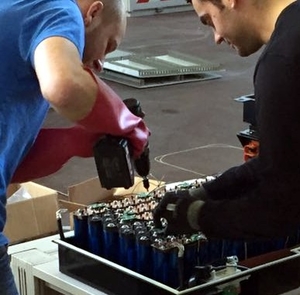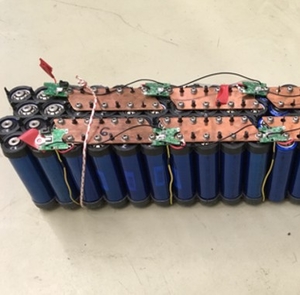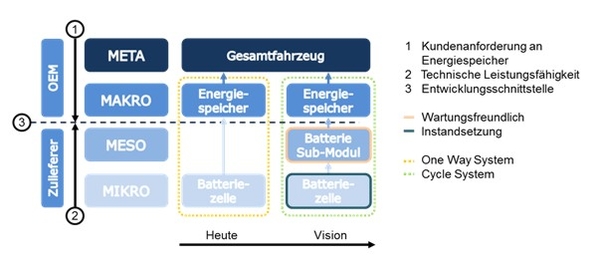Scientific news ticker march 2017
Modularity for energy storage systems - A requirements analysis for component construction in electromobility
Figure 1: Magdeburg model of levels for the future modularization of energy storage systems
March 2017 Driven by e-mobile applications, the development of cell technology for high-performance batteries is at the threshold of industrial production and assembly on a large scale. Current energy storage systems for series applications are self-contained and define themselves as a disposable battery (one-way system). The maintenance of individual cells causes a high disassembly effort. In order to ensure long-term value, modular energy storage concepts come into the focus. The IAF realizes energy storage concepts with different battery cell types (Fig. 1) in its research work in the area of e-mobility. These are tested for their suitability in electric vehicle function patterns, and malfunctions and the long-term utility are derived.
Based on these surveys, a systematic requirements analysis was carried out on the future design of energy storage systems this year. The aim is to implement a cycle-system energy storage, which allows to remedy the loss of capacity with minimal effort. For this purpose, a structuring and classification of the functional components of the energy storage system into a multi-level model (Fig. 2) was carried out. The model shown in the figure is composed of four levels. The meta-level - the entire vehicle - represents the interaction of all modules. At the macro-level, the electric drive modules are arranged; here the energy storage. At the meso-level, energy storage sub-modules are arranged as a functional unit. The battery cell represents the smallest functional component and is assigned to the micro-level.
With the focus on the diagnosis and maintenance friendliness of energy storage systems, it is absolutely necessary, from the IAF's point of view, to introduce a meso-level. This level has to be in focus for the following energy storage developments in order to allow sub-modules to be exchanged with minimal effort. This ensures a long-term utility and allows an external repair of the sub-module. Under real operating conditions, various sub-module concepts will be tested at the IAF in the coming year. The data generated from these results give conclusions on the assembly and conditioning, which feed into an iterative development process.
Figure 2: Various battery cell types tested at the IAF


Contact: Dipl.-Ing. Gerd Wagenhaus (Leitung) / Dipl.-Wirtsch.-Ing. Stefan Lüdecke / Tobias Stefaniak M.Sc. (Editha-Team)







